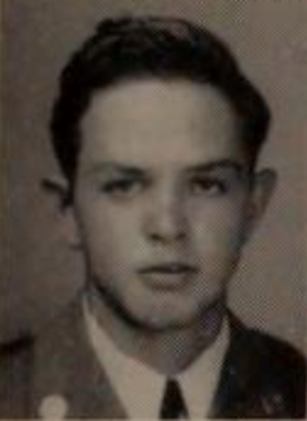Scroll of Honor – William Daniel Rowland
Tinian
Written by: Kelly Durham
The fifteen islands of the Mariana archipelago include Guam, Saipan, and Tinian. They lie in the North Pacific Ocean 1,500 miles south-southeast of Japan, 3,700 miles west-southwest of Hawaii, 1,400 miles north of New Guinea, and 1,600 miles east of the Philippines. In 1944, this location made the Marianas, according to historian James Hornfischer, “the most strategically valuable pieces of military real estate in the world.” In June and July of that year, the Marianas would become the focus of Admiral Chester Nimitz’s Central Pacific offensive. The conquest of Saipan, Tinian, and Guam would determine the course of the war in the Pacific. William Daniel Rowland, a member of Clemson’s Class of 1946, would be one of the men fighting to liberate the Marianas from the Japanese.
Rowland came to Clemson from the small west Texas town of Alpine. He completed his first semester, but as the United States continued to mobilize for war, Rowland left Clemson in January 1943 and enlisted in the Marine Corps.
The Marine Corps was quickly developing a reputation as America’s amphibious warfare force, but it was a reputation earned with the blood and sacrifice of its members. Attacking a land objective from the sea had long been considered the most difficult of military operations and the Marines had refined their doctrine, tactics, and equipment in campaigns on Guadalcanal in the Solomon Islands, Tarawa in the Gilbert Islands, and Kwajalein and Eniwetok in the Marshall Islands.
In March 1944, the Joint Chiefs of Staff directed the seizure of the Mariana Islands as the next step in the building momentum of the Central Pacific assault on Japan. One of the major units to be involved in the ground offensive was the 4th Marine Division then training at Maui, Hawaii. Private First Class Rowland was assigned to the 4th, which had been formed only a year earlier but had already experienced combat in the battle to seize Kwajalein. With the Joint Chiefs directive, the 4th Marine Division’s pace of training intensified with amphibious exercises at Kahului on Maui’s north coast.
Operation FORAGER, the invasion of the Marianas, would present new challenges for the Marines and Army forces making the landings. The islands were much larger than the small coral atolls previously conquered and the islands included a sizeable civilian population that would be caught between the defending Japanese and attacking Americans. The islands also lay within what Japan considered its “inner defensive perimeter.”
On June 15, Rowland’s 4th Marine Division landed on Saipan. In bitter fighting, the island was subdued by July 9. The fall of Saipan reverberated across the Pacific all the way to Tokyo. The loss of this strategically placed island caused the fall of the Japanese cabinet headed by Prime Minister Hideki Tojo, who, with this defeat, no longer enjoyed the confidence of Emperor Hirohito.

North Field, Tinian in 1945.
Photo: National World War II Museum
Despite the change in Japanese leadership, there was no pause in the American offensive. At 0740 hours on July 24, two regiments of the 4th Marine Division landed on White Beach 1 and 2 on the northwest coast of Tinian. Once again, the outgunned Japanese ferociously defended the island, but just before seven p. m. on August 1, General Schmidt, commanding the Marine forces ashore, declared the island “secure.” According to Hornfischer, “the mop-up phase was little less dangerous than the assault.” Roving groups of Japanese survivors of the battle continued to make pointless attacks that contributed nothing to the outcome of the war save additional casualties on both sides. One of these was William Daniel Rowland who was killed in action on August 5.
Before the smoke of battle cleared, Army aviation engineers were already at work turning Tinian into the largest air base in the world. Almost half of the island’s thirty-nine square miles would be paved to accommodate the new super heavy B-29 bombers and escorting fighters which would soon begin the horrific fire-bombing campaigns against Japanese cities. Among the Army Air Force units moving into Tinian was “a mysterious and secretive B-29 unit whose compound was double-fenced and patrolled by armed sentries.” Three hundred sixty-six days after the death of William Daniel Rowland, the 509th Composite Group would launch from Tinian’s North Field on its fateful mission to drop the atomic bomb on Hiroshima.
Private First Class William Daniel Rowland was buried in the National Memorial Cemetery of the Pacific in Honolulu.
For more information on William Daniel Rowland see:
https://soh.alumni.clemson.edu/scroll/william-daniel-rowland/
For additional information on Clemson University’s Scroll of Honor visit:
https://soh.alumni.clemson.edu/
See also The Fleet at Flood Tide: America at Total War in the Pacific, 1944-1945 by James Hornfischer, Bantam, 2016 and Twilight of the Gods: War in the Western Pacific, 1944-1945 by Ian Toll, W.W. Norton & Company, 2020.
